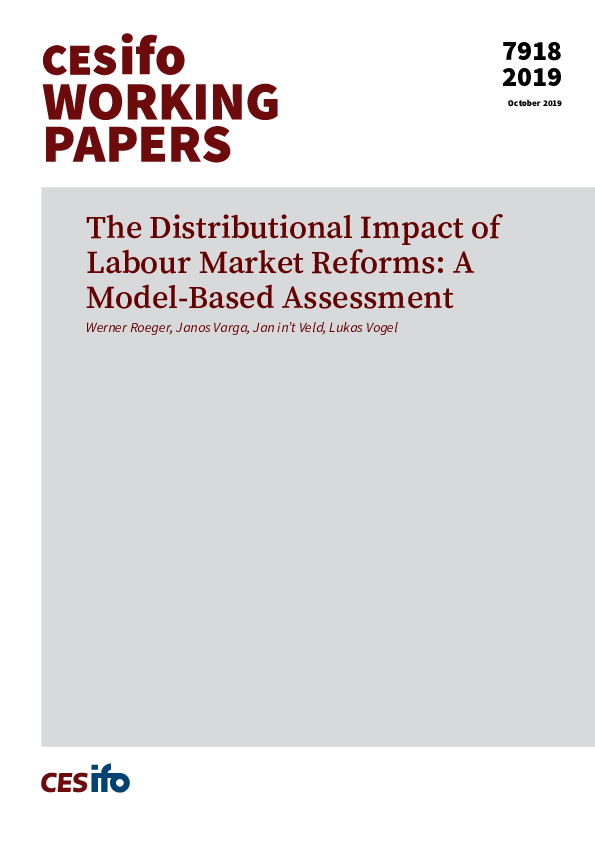The Distributional Impact of Labour Market Reforms: A Model-Based Assessment
CESifo, Munich, 2019
CESifo Working Paper No. 7918

This paper studies the effects of labour market reforms on the functional distribution of income in a DSGE model (Roeger et al., 2008) with skill differentiation, in which households supply three types of labour: low-, medium- and high-skilled. The households receive income from labour, tangible capital, intangible capital, financial wealth and transfers. We trace how structural reforms in the labour market affect these different types of income. The quantification of labour market reforms is based on changes in structural indicators that significantly reduce the gap of the EU average income towards the best-performing EU countries. We find a general trade-off between an increase in employment for a particular group and the income of the average group member relative to income per capita. Reforms that increase employment of low- and medium-skilled workers imply a trade-off between employment and wages in the low- and medium-skilled group, due to the increase in the skill-specific supply of labour. Capital owners generally benefit from labour market reforms, with an increasing share in total income. This can be attributed to limited entry into the final goods production sector, underlining the importance of product market reforms in addition to labour market reforms.
Labour Markets
Fiscal Policy, Macroeconomics and Growth